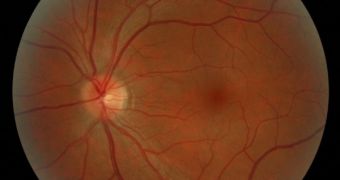Researchers are on the verge of a major breakthrough in curing blindness, or at least improving it. A form of artificial retina – the portion of the eye that allows the light to be converted into electrical impulses, which are then transported via nerves to the brain and create the sensation of vision – has been created, and patients using it reported that they could see shapes, some colors, and movement.
"Retinal prostheses represent the best near-term hope for individuals with incurable, blinding diseases of the outer retina," explains Dr. Mark Humayun, who is a surgeon at the Doheny Eye Institute, from the University of Southern California, in Los Angeles. He is the one that implanted patients with the artificial retina. The program was sponsored by the US government, which aims at providing hundred of thousands of blind people with the opportunity to see the faces of loved ones again, as well as to read large letters in the printed press.
The concept behind the artificial retina is fairly simple, the researchers say. The patient wears a pair of dark glasses, which have a small camera attached above. The signal then moves to a microprocessor, placed on the carrier's hip. The system is then connected to an electrode array, consisting of 16 conductors for electrical signals, which generate 4x4 visual impulses on a silicon microchip, surgically attached to the damaged retina.
The end result is a 4x4 pattern of light and dark spots being generated on a portion of the brain – the visual cortex – situated at the back of the head. Over weeks or months of training, depending on the patient, the brain finally readjusts to interpreting visual signals and starts recognizing large objects, letters, shapes, figures, movement, and even shades of gray.
Ray Orbach, the Energy Department's National Laboratories' undersecretary for science, said in December that "We're aiming for a 1,000-electrode array." It would "let a blind patient recognize objects and read large-scale newsprint."

 14 DAY TRIAL //
14 DAY TRIAL //